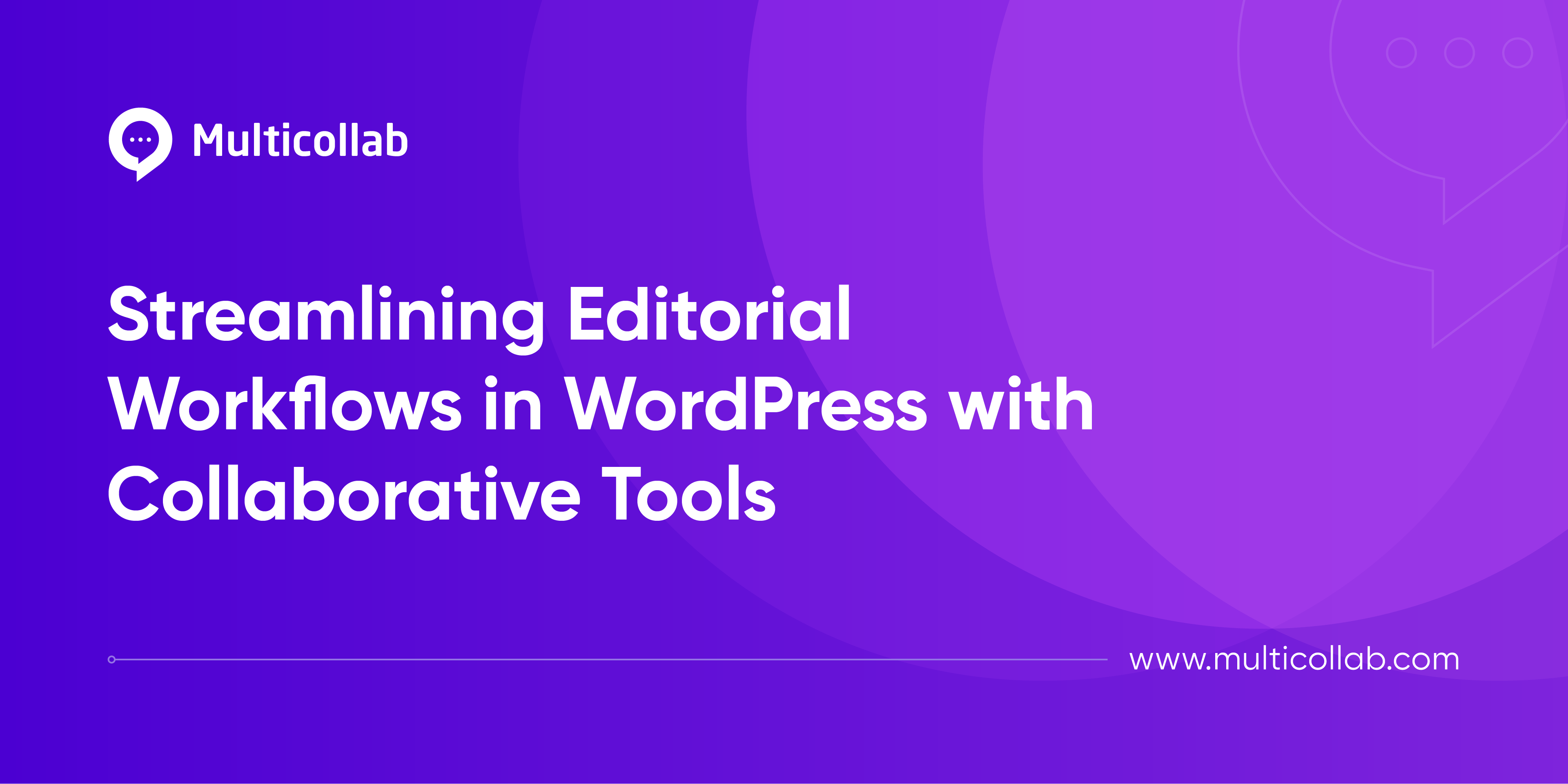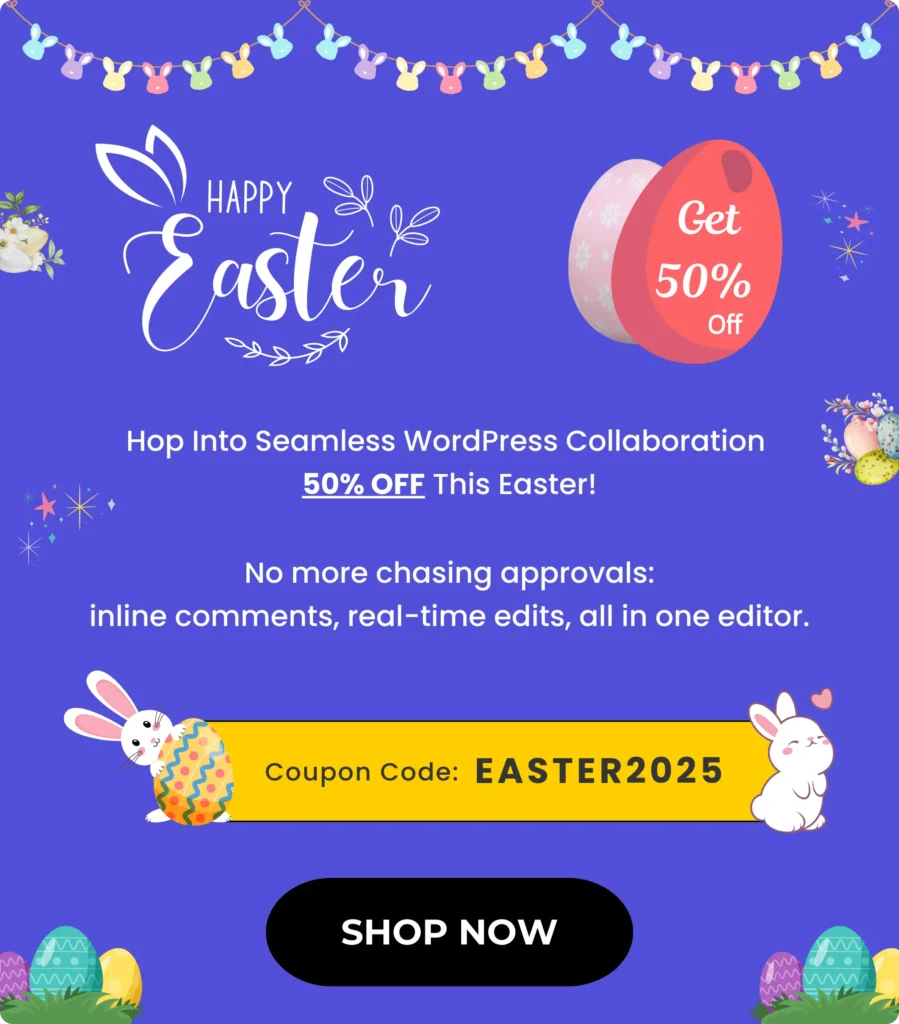Table of Contents
The efficiency of editorial workflows is not just beneficial—it’s essential. Streamlining processes becomes paramount as the content volume produced and consumed across platforms skyrockets. Publishers and content managers increasingly use sophisticated tools and platforms that handle modern content creation and distribution complexities.
Wordpress, with its 2024 developments, has become even more of a central hub for collaborative editorial work. It offers a versatile foundation that supports various plugins and tools designed to enhance productivity and team collaboration.
One example of these innovations is integrating document handling and printing solutions directly from WordPress. This eliminates traditional bottlenecks associated with physical document management and offers a smoother, more integrated workflow solution. This is just one example of how WordPress can serve as a platform for publishing and a comprehensive tool for managing business operations effectively.
Understanding WordPress Editorial Workflows
Editorial workflows define how content is created, reviewed, approved, and published within a publishing platform. In WordPress, this workflow is pivotal for ensuring that all content adheres to consistent quality and aligns with the organization’s or individual publisher’s strategic objectives.
The initial phase of the workflow involves planning, where topics are selected based on audience analysis and content strategy. Next, the drafting process sees writers create content aligning with the defined topics and objectives. Following this, the content undergoes a rigorous editing process where it is refined for clarity, accuracy, and engagement. The subsequent approval stage is critical as stakeholders review the content to ensure it meets all predefined criteria and aligns with the brand’s voice. Finally, the content is scheduled and published, often using automated tools within WordPress to ensure it goes live at optimal times for audience engagement.
The significance of these workflows in WordPress cannot be overstated. They are the backbone for maintaining content quality, ensuring that every piece of content meets the organization’s standards and is suitable for its audience.
Key Tools for Enhancing Collaboration in WordPress
WordPress excels as a platform in offering many tools designed to foster collaboration among content creators. WordPress’s core functionality can be significantly extended with plugins and third-party integrations that transform the traditional content management system into a robust collaborative environment. These tools are designed to streamline communication, track changes, manage drafts, and ensure every team member is aligned with the workflow.
Among the most impactful of these tools are plugins that support real-time collaboration. These plugins allow multiple authors to work on the same document simultaneously, see instant updates and edits from team members, and communicate through integrated chat functions directly within the WordPress dashboard. Additionally, editorial calendar plugins help teams visualize the content pipeline, schedule posts effectively, and allocate resources efficiently, ensuring that deadlines are met and content distribution is balanced.
One innovative aspect of enhancing user interaction through WordPress involves using multi-step forms. These forms are functional and designed to improve user engagement through an interactive content submission process. Multi-step forms break down the information submission process into manageable parts, making it less daunting and more user-friendly for visitors. This approach captivates users and increases the likelihood of form completion rates, which is crucial for activities like registrations, surveys, and data collection.
Customizing WordPress for Optimized Workflows
Customizing WordPress to fit specific editorial needs is critical to optimizing workflows and enhancing the functionality of a website. One of the most effective starting points for customization is blank themes. These themes, often referred to as starter themes, provide a minimalistic framework that developers can build upon. Without the clutter of predefined styles or complex layouts, these themes allow teams to tailor every aspect of the website’s design and functionality to fit their unique requirements. This approach ensures that the theme only includes necessary items, improving site performance and simplifying maintenance.
Another crucial aspect of customization involves product permalinks. Permalinks are the permanent URLs to individual posts, pages, or other pieces of content on your website. WordPress allows the customization of these links, essential for improving search engine optimization (SEO) and enhancing user navigation. By crafting descriptive, keyword-rich permalinks, a site can achieve better visibility on search engines and give users a clearer idea of what to expect from a link before clicking it. This minor adjustment can significantly improve site traffic and user experience.
Furthermore, understanding and accessing WordPress’s core files is fundamental for anyone looking to customize their site deeply. The root directory contains all the files necessary to run WordPress, including the configuration files, plugins, themes, and scripts. Identifying this directory is crucial for properly installing and updating plugins and themes and making manual file adjustments. It’s also where essential security measures are implemented, such as configuring .htaccess files for URL redirections or to enhance security settings.
By mastering these customization techniques—leveraging blank themes for a tailored design, optimizing permalinks for SEO and navigation, and managing the root directory for proper installations and upgrades—WordPress users can create highly efficient and smoothly running websites perfectly aligned with their editorial strategies and operational needs.
Integrating Interactive Elements into Your Content Strategy
Integrating interactive elements into a content strategy is a powerful way to boost audience engagement and retention. One particularly effective method is a webinar with interactive features. Presenters can incorporate features such as live polls, Q&A sessions, and interactive quizzes to make webinars more engaging.
These elements encourage real-time participation and make attendees feel like active contributors rather than passive viewers. Tools that allow for breakout rooms or small group discussions can personalize the experience, making it more memorable and impactful for participants.
WordPress users can enhance static content beyond live events like webinars by embedding interactive videos, clickable infographics, and animated elements that respond to user actions. These features enrich the user experience and significantly increase the time spent on the site, a key metric for assessing user engagement. Using these tools, content creators can transform traditional posts into dynamic, interactive experiences that resonate more deeply with their audience.
Streamlining Content Creation and Management
Efficient content creation management is vital for any editorial team looking to publish high-quality material consistently. WordPress offers tools and strategies that significantly streamline these processes, facilitating real-time collaboration and effective project management.
Real-time collaboration is critical in today’s fast-paced digital environment, where team members may be spread across different locations. WordPress supports a variety of plugins that enable editorial teams to work together in real-time. This instant access and communication eliminate many bottlenecks associated with traditional content approval processes, ensuring content moves smoothly from conception to publication.
Another cornerstone of efficient content management is editorial calendars and task management plugins. Editorial calendars provide a visual overview of when content is due, which is essential for managing multiple content streams and ensuring regular publication schedules. They allow teams to see what content is coming up, who is responsible for it, and its current status, facilitating better resource allocation and deadline management.
Task management plugins complement these calendars by breaking down larger projects into manageable tasks, assigning them to individuals, and setting deadlines. These plugins often feature notifications and reminders, ensuring everyone on the team knows their responsibilities and deadlines. This level of organization helps prevent tasks from falling through the cracks and promotes accountability among team members.
Conclusion
Throughout this exploration of streamlining editorial workflows in WordPress, we highlighted several vital tools and strategies that enhance collaboration and content management. From leveraging the versatility of blank WordPress themes and the SEO benefits of customized permalinks to integrating interactive webinars and dynamic content elements, WordPress stands out as a robust platform capable of adapting to the varied needs of modern digital publishers.
The future of collaborative tools and editorial workflows within WordPress promises greater integration and automation. As technology advances, we can anticipate more sophisticated AI-driven tools that will further simplify content creation, personalization, and distribution. These innovations will offer intuitive interfaces and predictive analytics, helping content teams work more efficiently and strategically.
The ever-evolving digital landscape demands constant adaptation and improvement of editorial workflows. As new technologies emerge and audience preferences shift, teams must stay agile—continually testing, learning, and integrating new tools that can enhance their productivity and engagement. By staying proactive and embracing these advancements, WordPress users can ensure that their content not only meets but exceeds the expectations of their audiences, securing their place at the forefront of digital publishing.
In conclusion, whether you are part of a small blogging team or a large media house, the success of your editorial endeavors in WordPress hinges on your willingness to embrace new technologies and optimize your workflows. The tools and strategies discussed here provide a solid foundation, but the journey toward streamlined, impactful digital publishing is ongoing and ever-changing.







